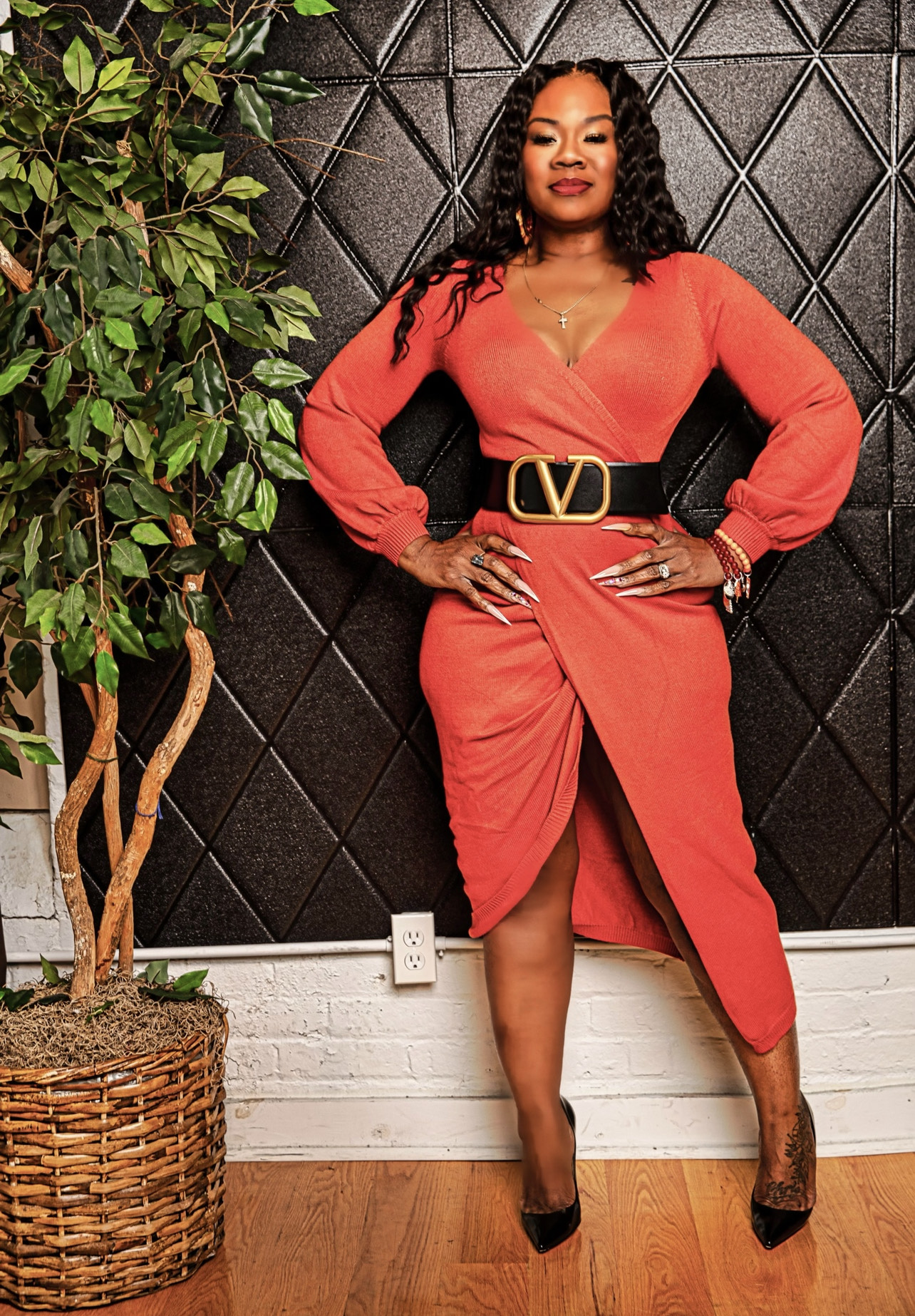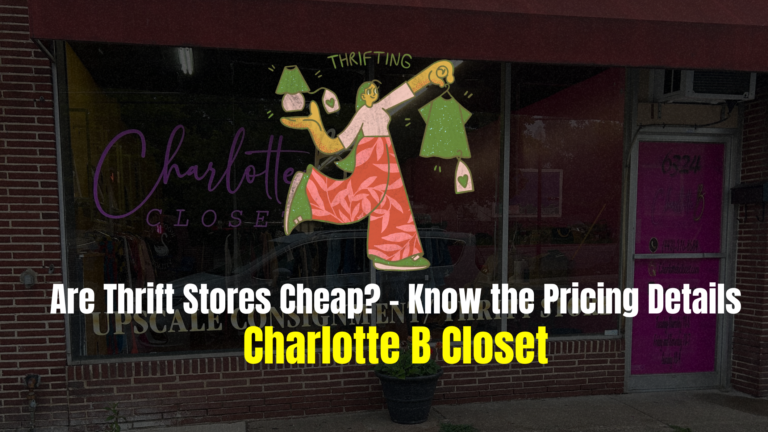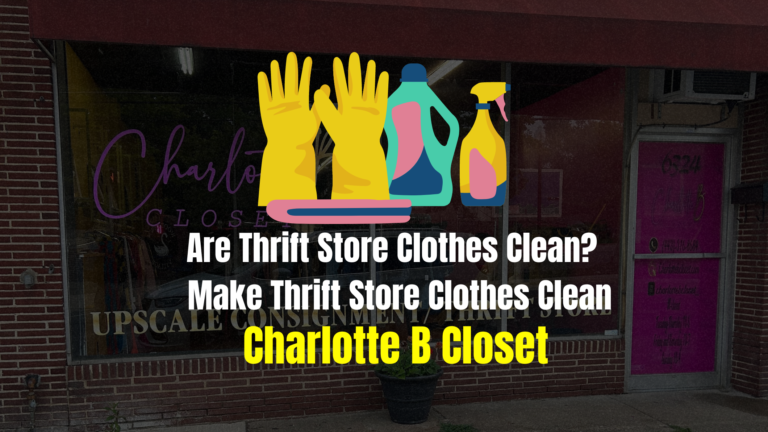How Much Do Thrift Stores Pay For Clothes?
Navigating the thrift store world can be exciting and overwhelming, especially when looking to sell your cherished items.
A burning question often lingers is: how much do thrift stores pay for clothes?
While finding the answer, it’s essential to understand that prices can fluctuate based on the item’s brand, condition, demand, and individual store policies. For the most precise figures, reaching out to specific thrift or consignment shops in your area is recommended.
Whether you’re a seasoned thrifter or a novice looking to dip your toes, this guide will shed light on the nuances of selling to thrift stores and maximizing your earnings.
How Much Do Thrift Stores Pay for Clothes – Quick Guide
Understanding the potential earnings from selling clothes is paramount when diving into thrift stores. Prices are influenced by many factors, from the garment’s condition and brand to the current market demand and specific store guidelines.
Established names like Goodwill might offer immediate payouts, while consignment shops could promise potentially higher returns post-sale. Digital platforms like Poshmark bridge the gap between traditional and online thrift shopping, broadening the seller’s reach.
Sellers should be proactive to maximize earnings, ensuring their items are in top condition and aligning with current fashion sentiments.
Above all, diversifying selling avenues, from brick-and-mortar stores to online platforms, can be the key to tapping into varied audiences and optimizing returns.
Selling Your Style: Thrift Store Clothing Payments
The world of thrift stores has seen a significant resurgence in recent years, with more and more individuals turning to these treasure troves to find unique items and sustainable fashion choices.
Beyond the thrill of the hunt, many also explore thrift stores as a viable avenue to declutter and make some extra cash.
But the burning question remains: how much do these establishments pay for the clothes they procure?
Understanding the Basics
Thrift stores, with their eclectic mix of vintage and modern apparel, have emerged as both a fashionista’s paradise and a sustainability advocate’s dream.
For those with overflowing wardrobes, they present an opportunity to declutter and earn.
Typically, thrift stores offer sellers a fraction of the original retail price, often in the realm of 25% to 50%.
Yet, these figures are merely a guideline. The actual payout can swing widely based on numerous variables, including the garment’s state and its brand cachet.
Venturing further, the thrift store landscape is incredibly diverse. While some stores operate on a standard pricing formula, others have more fluid structures.
For instance, certain shops might provide a set amount for each item, irrespective of its original value.
Conversely, some might adjust their payouts based on anticipated resale values. Given this vast spectrum, it becomes imperative for sellers to grasp these nuances, ensuring they approach the selling process with informed and pragmatic expectations.
Deep Dive into Payment Factors
A matrix of factors influences the compensation one can fetch for their clothes at a thrift store.
First and foremost, the condition of the item plays a pivotal role. A luxury brand garment, still boasting its original sheen, is bound to command a higher price than a similar item showing signs of wear and tear.
Furthermore, the brand itself is another significant influencer. High-end designer labels or sought-after brands typically have a higher resale value.
Current market demand is yet another crucial determinant. Fashion is cyclical, and what’s trending today might be out of vogue tomorrow. Items that align with contemporary fashion preferences are more likely to be coveted, translating to better payouts.
Lastly, individual store policies can also dictate prices. Each thrift store or consignment shop has its own set of guidelines and pricing strategies, molded by factors like their target audience, location, and operational costs.
For sellers, a proactive approach is beneficial. By reaching out to specific stores and understanding their pricing dynamics, one can optimize their earnings.
Expert Tips
For those keen on maximizing their thrift store earnings, a few expert tips can go a long way.
First and foremost, presentation matters. Clothes that are laundered, neatly ironed, and devoid of any imperfections are more appealing.
Think of it as staging a home for sale; the better it looks, the higher the potential offers. Additionally, being organized can ease the selling process. Clothes presented neatly, either folded or on hangers, can expedite evaluations.
Timing is another vital aspect. Just as retail stores have peak seasons, so do thrift stores.
For instance, summer apparel will likely fetch better prices as the season begins, while winter wear might command higher prices during the colder months. Finally, diversification is key.
By exploring various selling avenues, from traditional thrift stores to online platforms, sellers can tap into different audiences, potentially leading to better overall earnings.
Do Thrift Stores Buy Used Clothes?
The thrift store culture is not only about buying but also selling. Individuals often wonder if thrift stores are a viable avenue to offload their used garments.
The answer is a resounding yes but with nuances. The buying practices, evaluation criteria, and pricing mechanisms can vary extensively across thrift stores.
Direct Purchase vs. Consignment:
Direct purchase is a straightforward method. In this model, the thrift store evaluates your items and offers a sum upfront.
The advantage here is immediacy; you get paid when the store accepts your items.
However, the amount might be a fraction of the potential resale price, as the store assumes all risks related to selling the item.
Consignment operates on a sale-first model. Your items are displayed in the store, and you’re paid only when they sell.
The payout can often be a more substantial percentage of the sale price, offering potentially higher earnings.
But it’s a waiting game. Your items might sell quickly, take time, or, in some cases, not sell at all.
The Process
Before approaching a thrift store, ensure your clothes are in the best possible condition. Clean them, fix minor damages, and present them neatly. The first impression can significantly influence evaluations.
Once at the store (or online platform), the evaluation process begins. Store associates examine your items for quality, brand, demand, and other factors.
Based on their assessment, they make an offer. If it aligns with your expectations, you can proceed. Otherwise, negotiations or exploring other stores are options.
Why Some Clothes Are Rejected
One of the primary reasons for rejection is the item’s condition. Excessive wear, visible damages, or any form of imperfection can lead to declines. After all, thrift stores aim for a balance between quality and affordability.
Fashion is ever-evolving. What was in vogue yesterday might not be today. Outdated styles, or those not currently in demand, might not find takers.
Sometimes, it’s just a matter of supply and demand. If the store already has an overstock of similar items or a particular brand is flooding the market, they might be more selective.
Factors Affecting the Cost Thrift Stores Pay for Clothes
Here are some factors that can boost or reduce the cost thrift stores pay for clothes.
Condition of the Clothes
A well-maintained garment can command a better price. Small efforts, from removing stains to mending minor tears, can elevate an item’s value.
Beyond the actual condition, how the item is presented during evaluation also matters. Neatly folded clothes, free from wrinkles, can create a positive impression.
Brands and Demand
Popular or luxury brands often have a dedicated following. Such items, if in good condition, can fetch handsome amounts.
With fashion’s ever-changing landscape, staying updated on current trends is crucial. Items that align with current fashion sentiments are more likely to be in demand.
Seasonality
Just as retail stores stock up on seasonal items, thrift stores, too, have their peak seasons. Understanding this dynamic can help sellers time their sales for maximum returns.
It’s all about striking when the iron is hot. Selling summer dresses in spring or winter jackets just before the cold sets in can yield better results.
Store Policies and Overhead Costs:
Thrift stores, at their core, are businesses. They have rents, utilities, staff salaries, and other operational costs. These overheads play into how much they can offer for items.
Each thrift store has its unique set of policies. Some might prioritize high turnover, pricing items for quick sales, while others might adopt a wait-and-watch approach, marking items at higher prices. Familiarizing oneself with these strategies can provide insights into potential payouts.
Types of Thrift Stores and Payment Methods
In today’s diverse retail landscape, thrift stores have evolved to cater to various niches and preferences.
From traditional brick-and-mortar establishments to digital platforms, the thrift shopping experience has been redefined, offering sellers multiple avenues to offload their preloved items.
Let’s delve deeper into the different types of thrift stores and their respective payment methodologies.
Traditional Thrift Stores
Established names like Goodwill and Salvation Army often emerge when one thinks of thrift stores. These stalwarts have been in the business for decades, building trust and a loyal customer base.
Their widespread presence makes them easily accessible to sellers looking for a quick and hassle-free selling experience.
Traditional thrift stores typically operate on a direct purchase model. Sellers bring in their items, which store associates then evaluate.
Upon acceptance, sellers receive an immediate payout. The pricing in these stores is designed to appeal to a broad audience, from budget shoppers to those looking for quality at a reduced price.
The goal is often quick turnover, ensuring that items don’t remain on the shelves for extended periods.
Consignment Shops
Consignment shops offer a more curated thrift shopping experience. These stores are discerning in their selection, often focusing on high-end brands, designer wear, or unique pieces that promise a distinct allure.
Consignment shops don’t offer immediate payouts, unlike traditional thrift stores. Instead, items are displayed for sale, and sellers receive their cut once a customer purchases them. This deferred payment model can often result in higher earnings, especially for sought-after pieces with a premium price.
Specialty Thrift Stores
As the name suggests, specialty thrift stores cater to specific niches. Whether it’s vintage apparel, high-fashion labels, or dedicated categories like sportswear or children’s wear, these stores offer a targeted shopping experience.
Given their niche focus, specialty thrift stores attract a particular clientele. Vintage enthusiasts might flock to stores offering retro styles, while fashion-forward shoppers might gravitate towards stores stocking designer labels.
The pricing in these establishments reflects their curated offerings, often positioned at a higher bracket than traditional thrift stores.
Digital Thrift Platforms
The digital revolution hasn’t spared the thrift store industry. Platforms like Poshmark and ThredUp have digitized the thrift shopping experience, allowing sellers to list their items online and reach a global audience.
Digital thrift platforms offer unparalleled flexibility. Sellers can list items at their preferred prices, participate in online negotiations, and even run sales.
The payment models on these platforms can vary. Some operate purely on consignment, while others offer direct purchase options.
The broad reach of these platforms means that unique or high-demand items have the potential to fetch attractive prices.
Conclusion
Thrift stores offer a unique blend of sustainability, fashion, and business. While the prospect of earning from preloved items is enticing, it’s imperative to approach the process with knowledge and realistic expectations.
From understanding the difference between direct purchase and consignment to recognizing the influence of brands and seasonal demands, the thrift store industry is as diverse as it is fascinating.
Armed with this knowledge, sellers can navigate this landscape confidently, optimizing their potential earnings and contributing to the sustainable fashion movement.
FAQs
What factors influence the pricing of clothes at thrift stores?
Thrift store pricing is shaped by the item’s condition, brand, current demand, and the store’s specific policies.
How do consignment shops differ from traditional thrift stores in terms of payment?
Consignment shops pay sellers post-sale, often as a percentage of the sale price, while traditional thrift stores usually offer upfront payments.
Are online thrift platforms better for selling high-end brands?
Online thrift platforms like Poshmark cater to a wider audience, often fetching better prices for sought-after or designer brands.
Is there an ideal time to sell specific clothes, like winter wear, to thrift stores?
Seasonality affects demand; selling winter wear just before colder months or summer clothes at spring’s onset can yield better returns.

Hi there, I’m Toni Whitten, but you might know me as LadyT. I’m a passionate entrepreneur and the proud owner of Charlotte B’s Closet, your go-to thrift store and upscale consignment.
Outside the store, I connect with the amazing women in my exclusive Facebook group, Housewives of Baltimore, boasting over 23k+ members.
In my free moments, I channel my passion for sharing genuine insights and helpful guides on various concerns through my blog at charlottebcloset.com.







